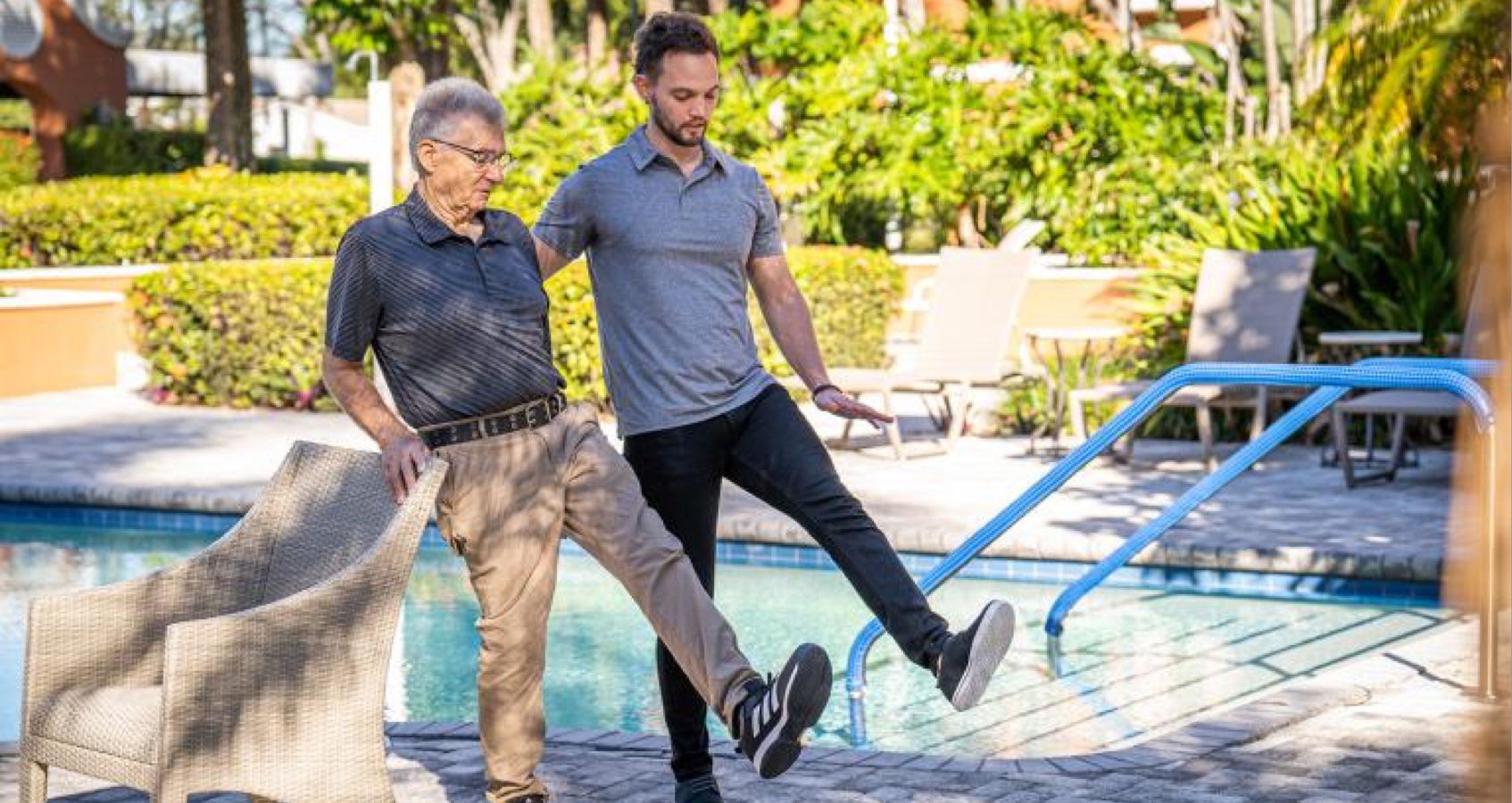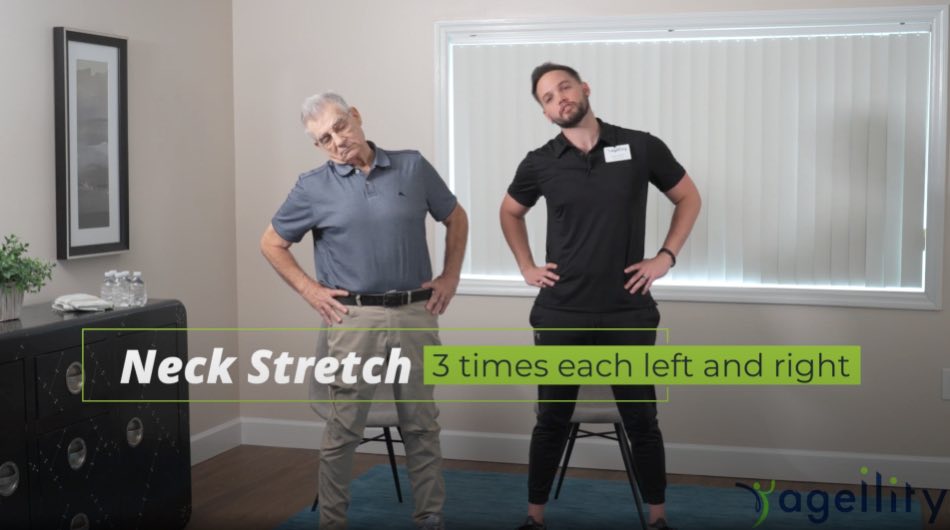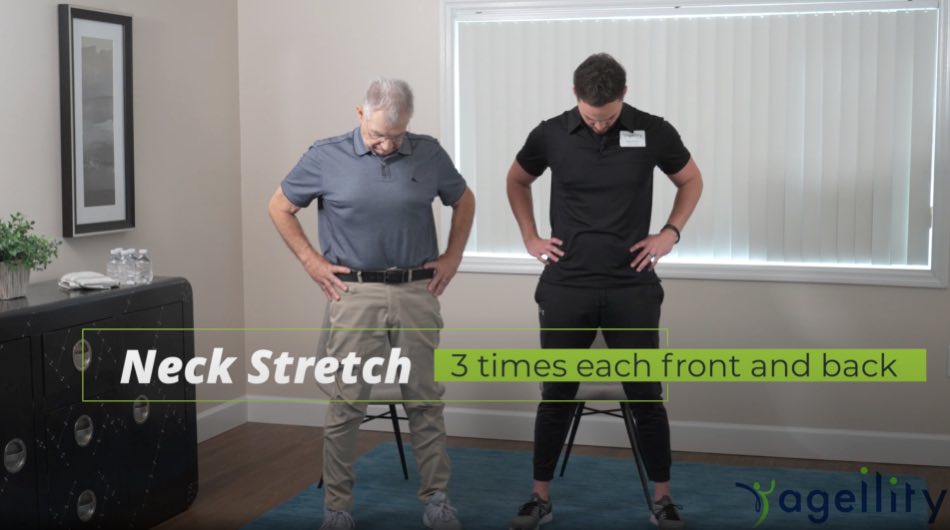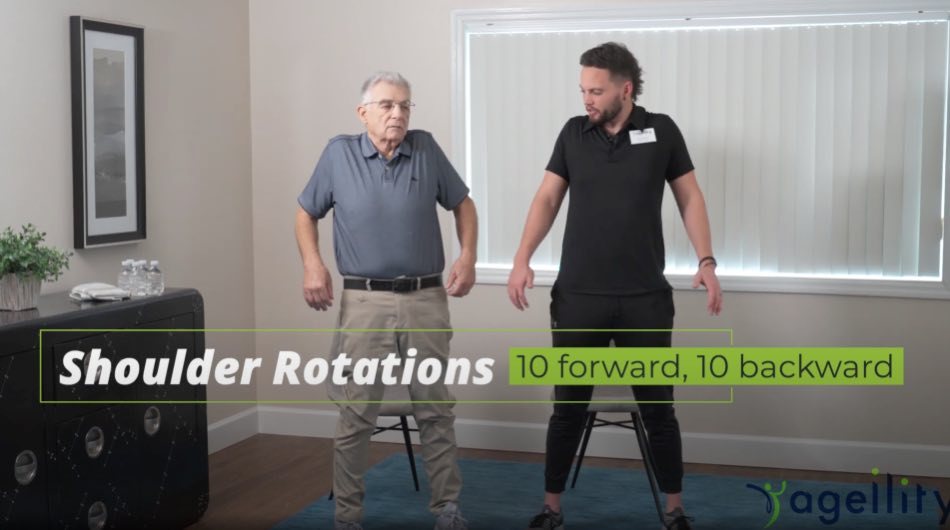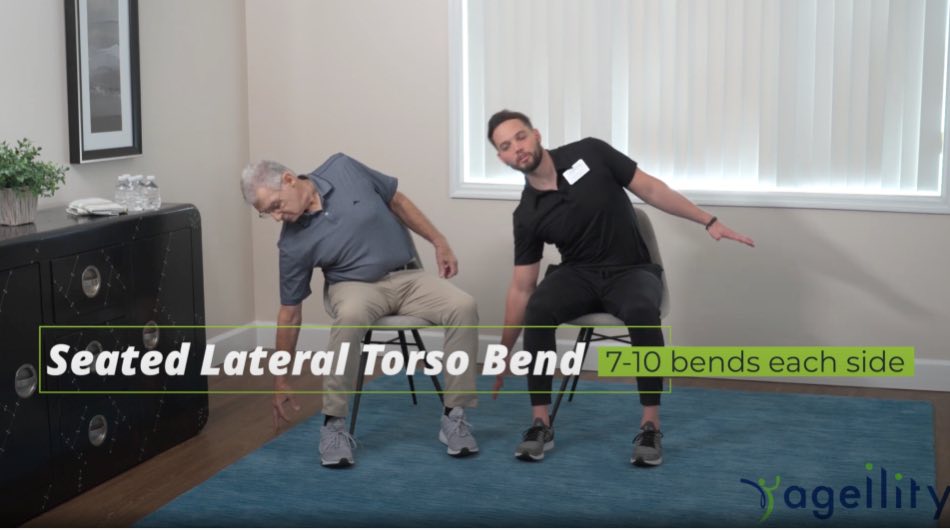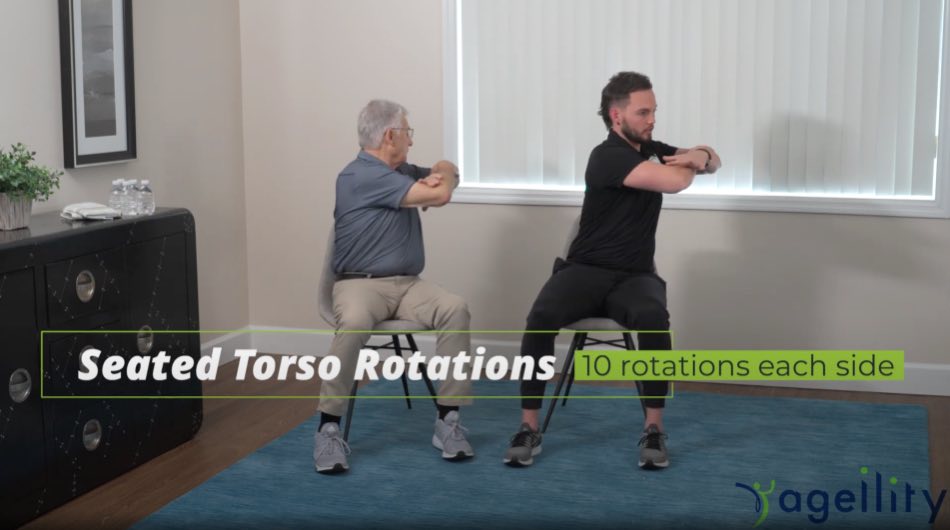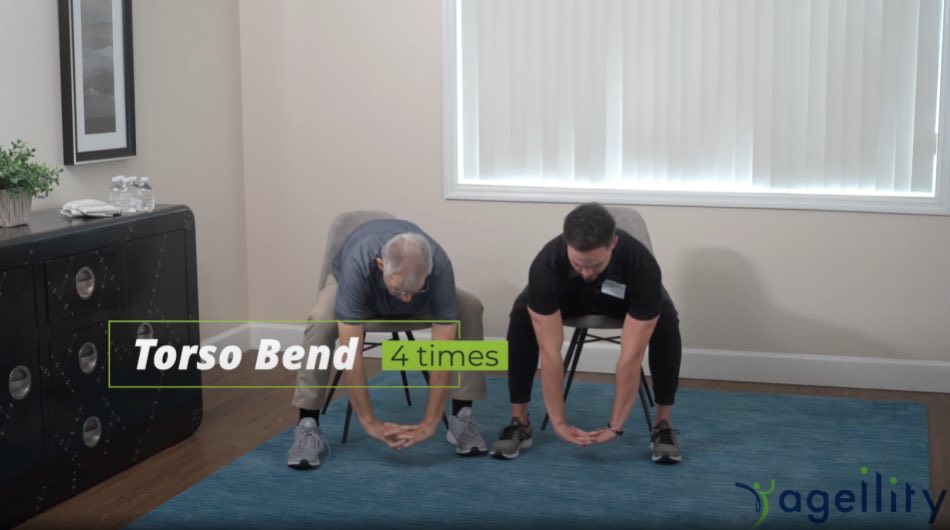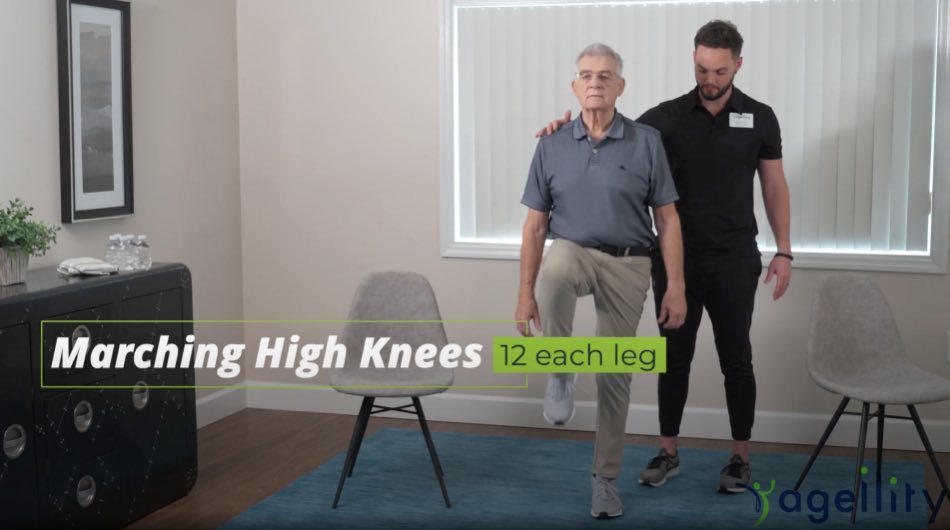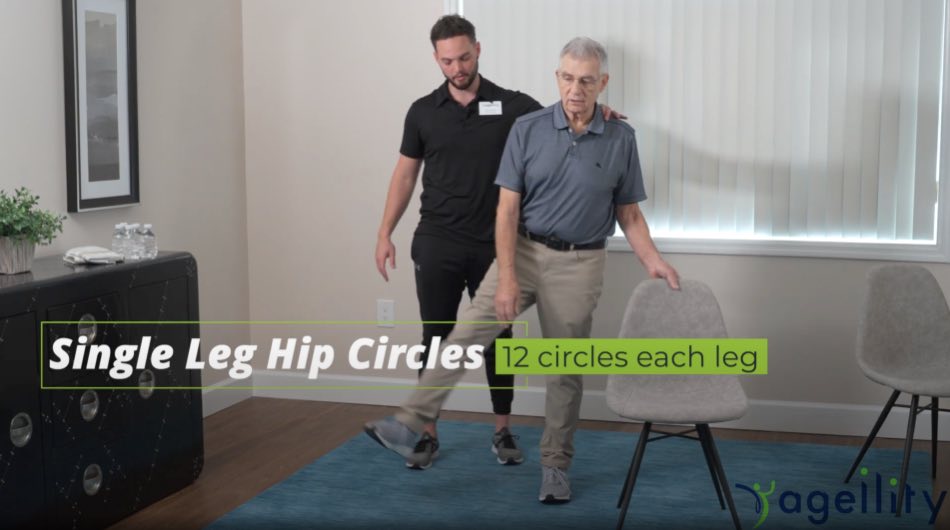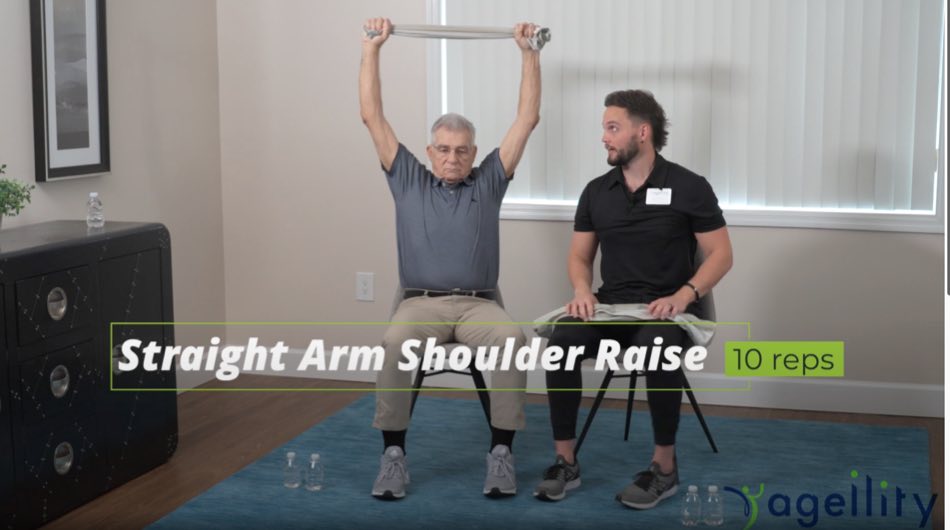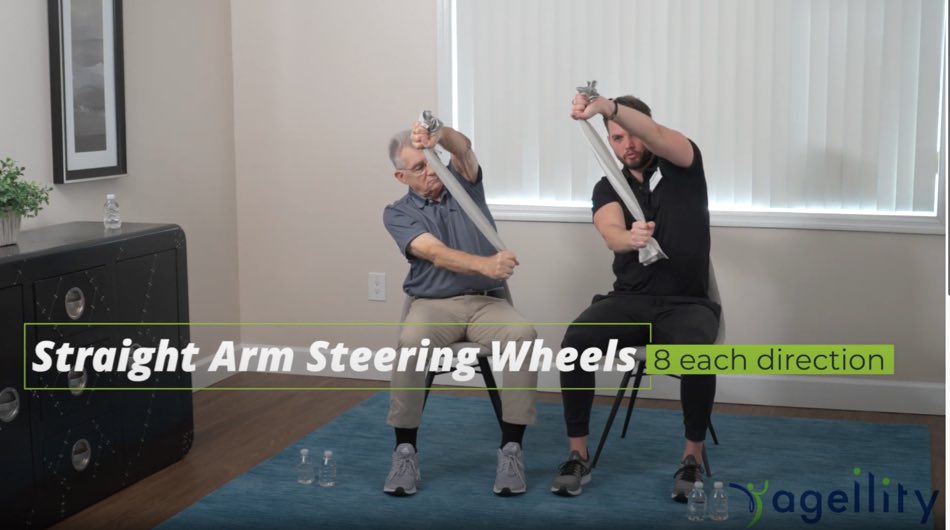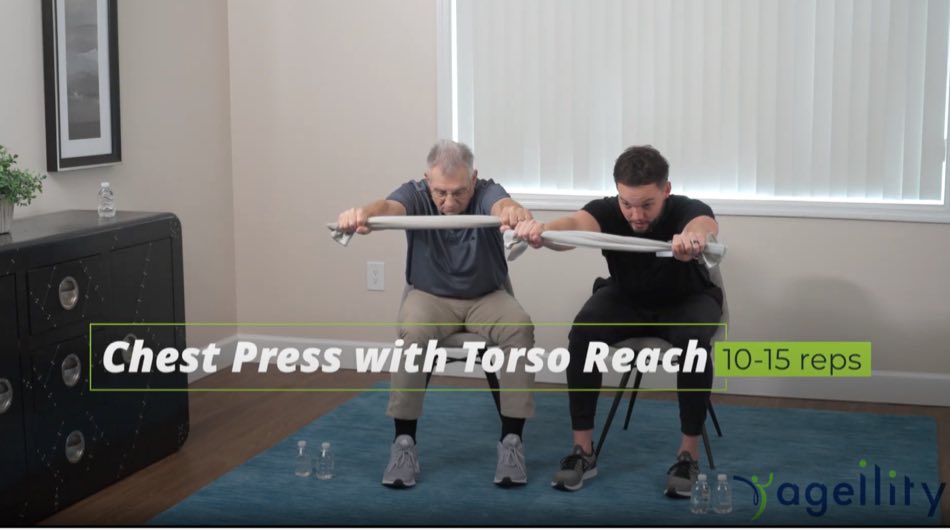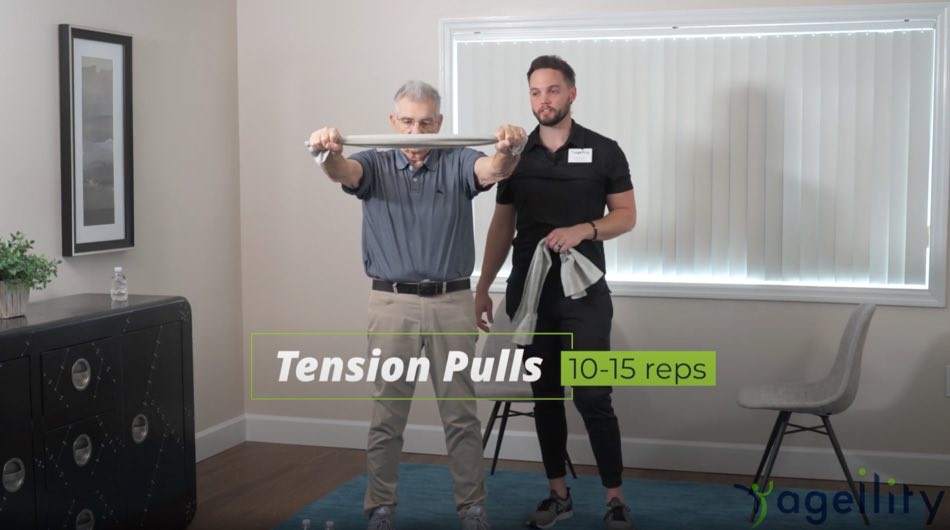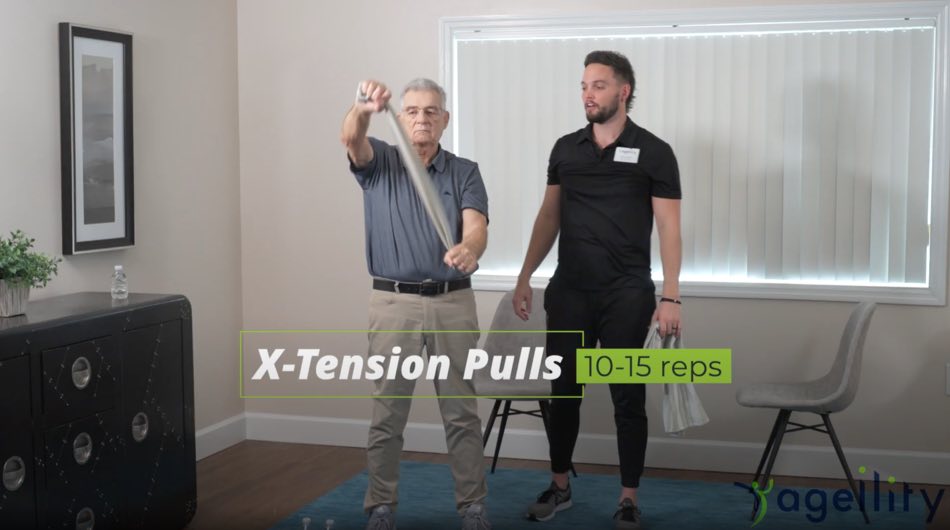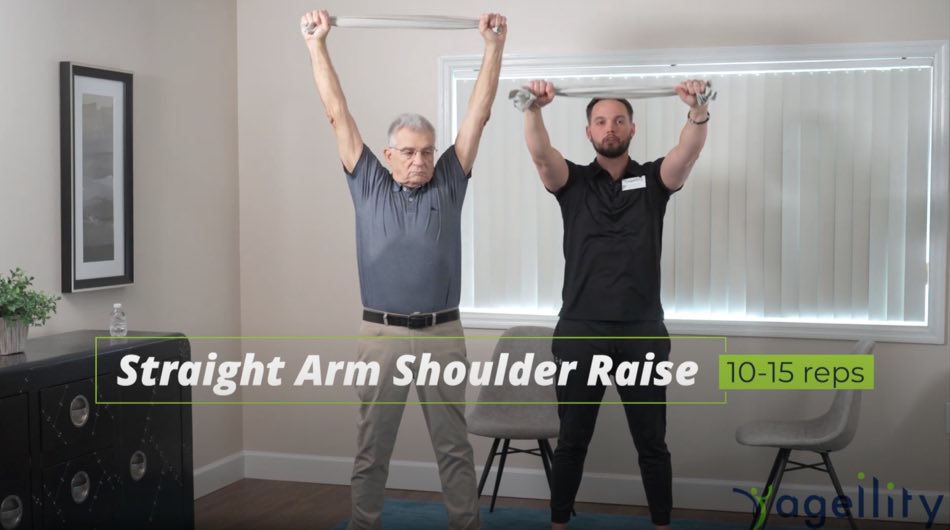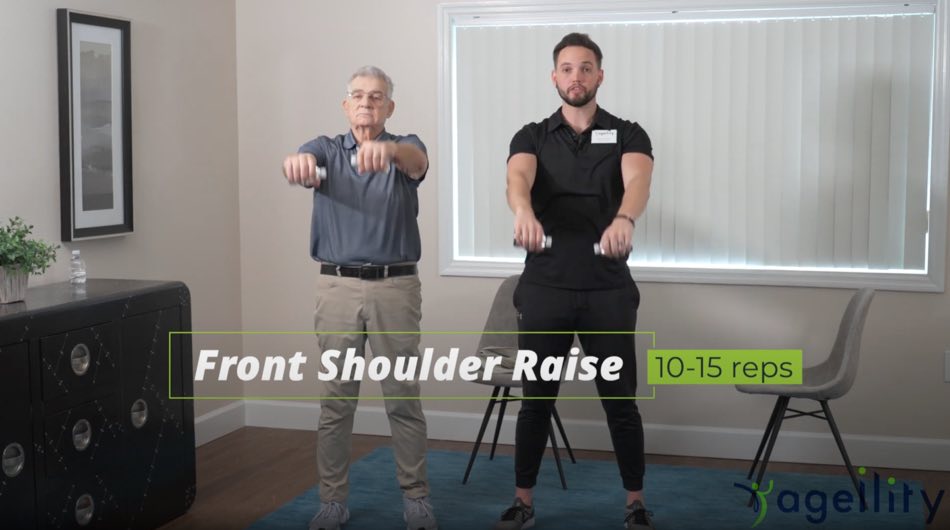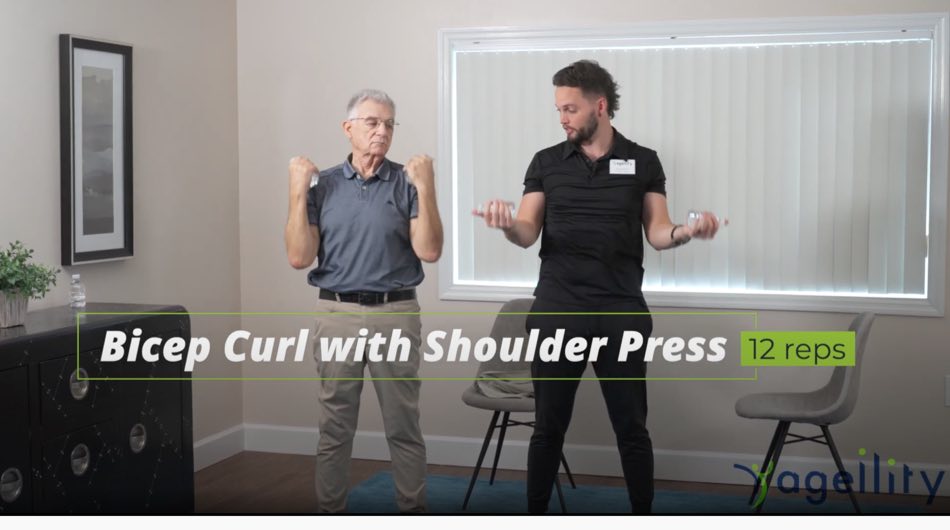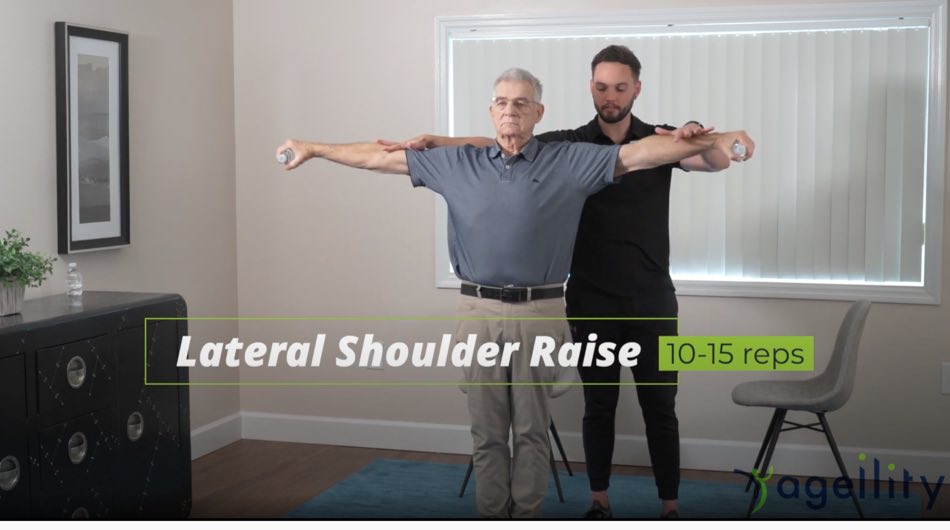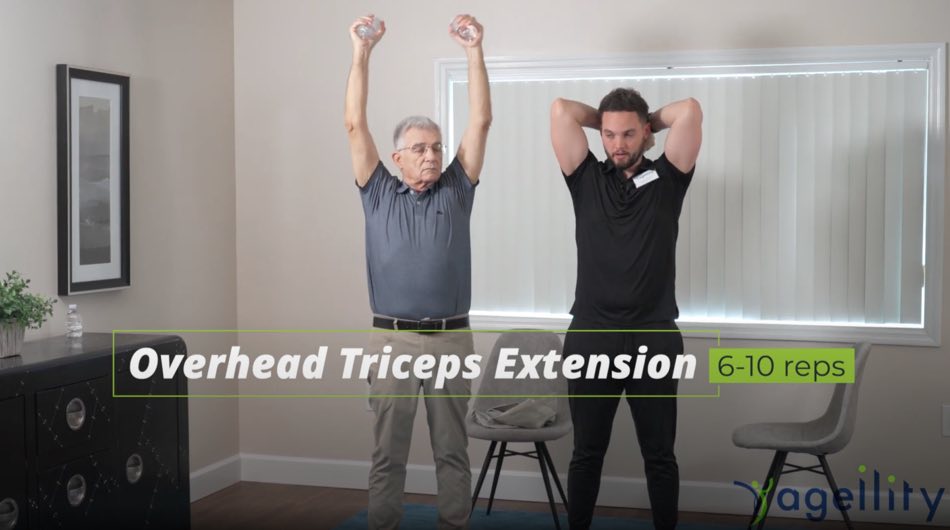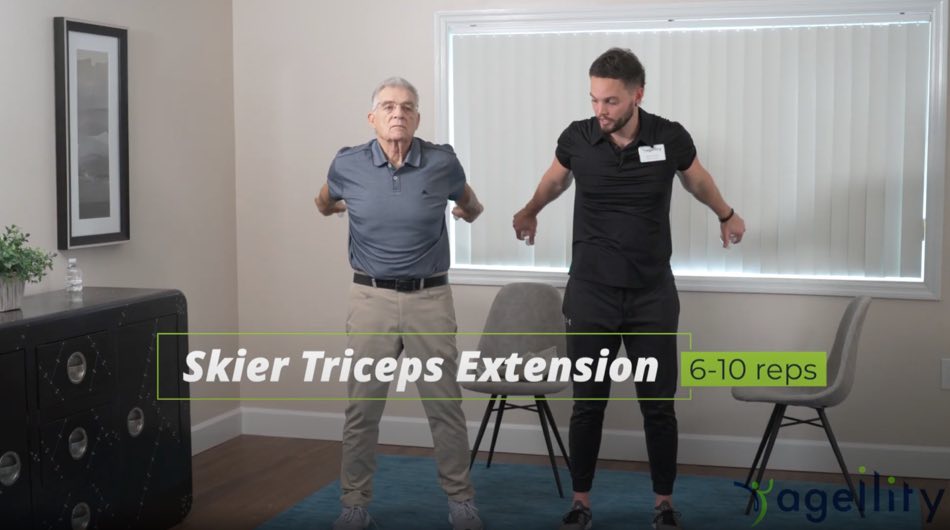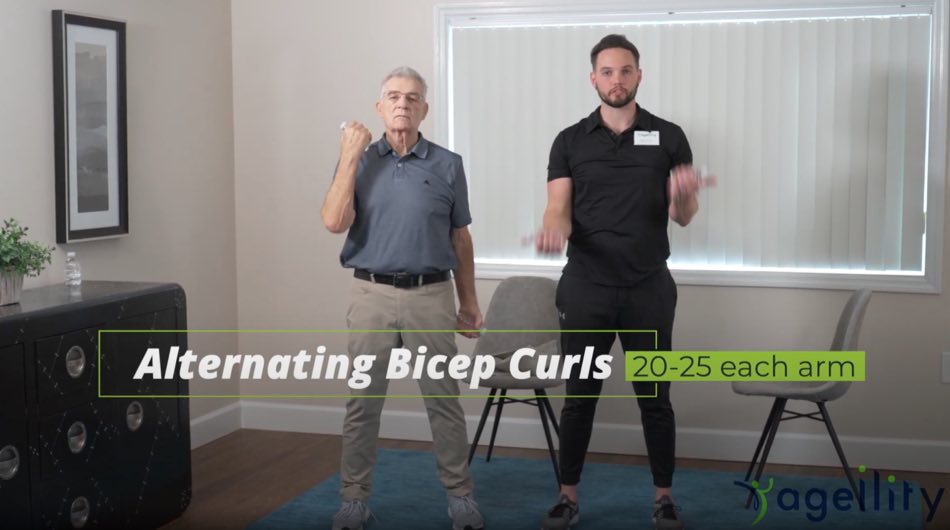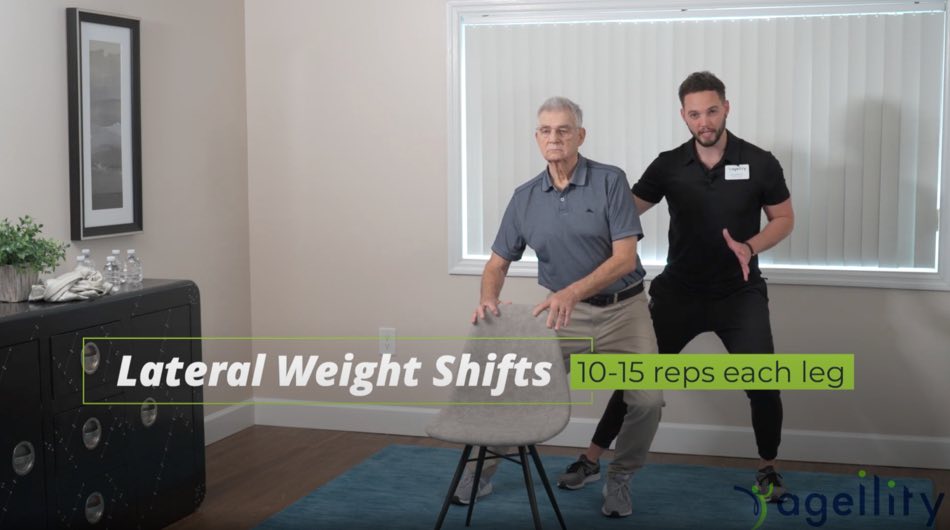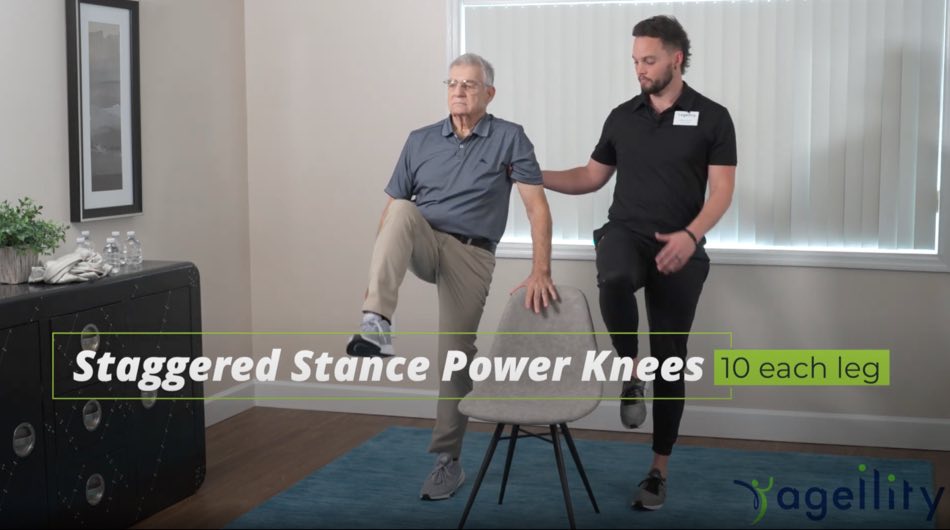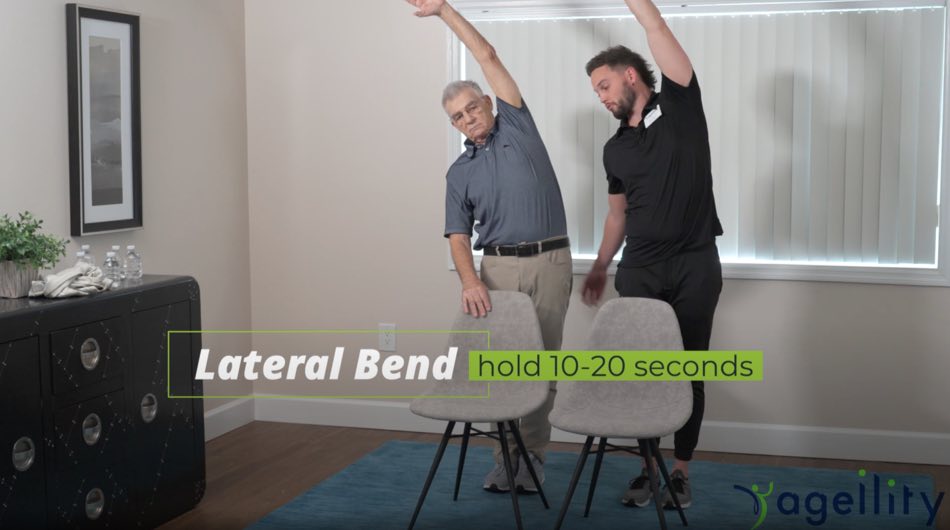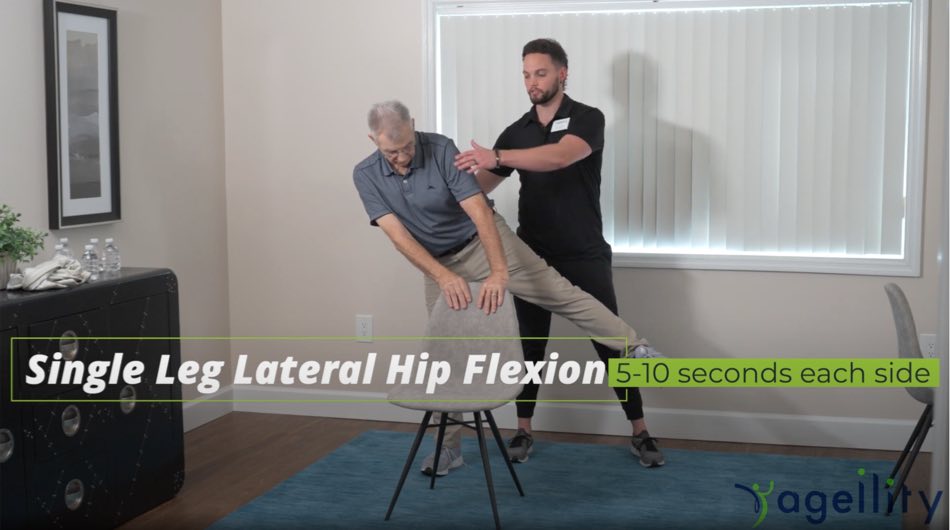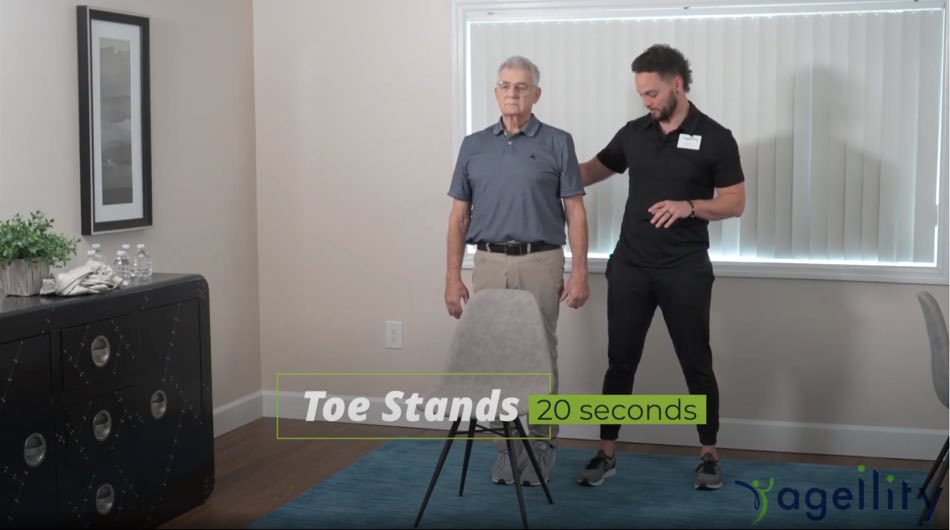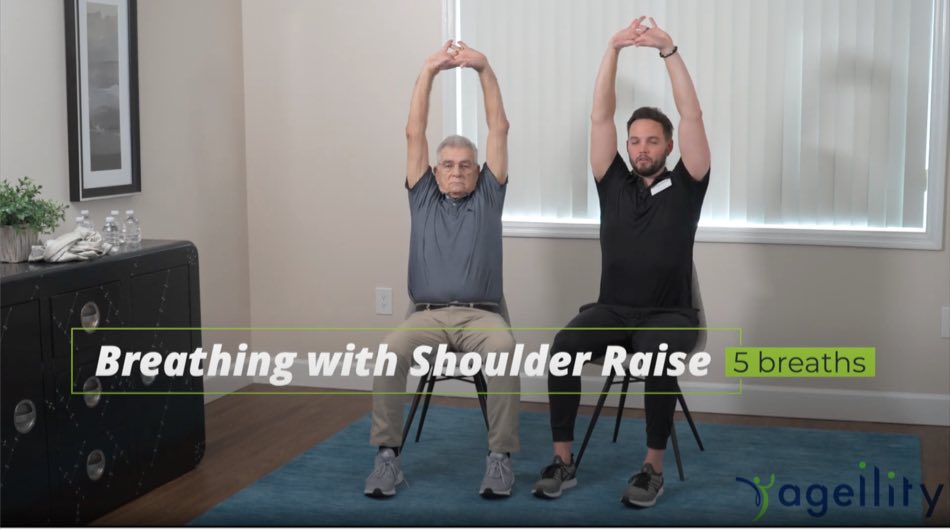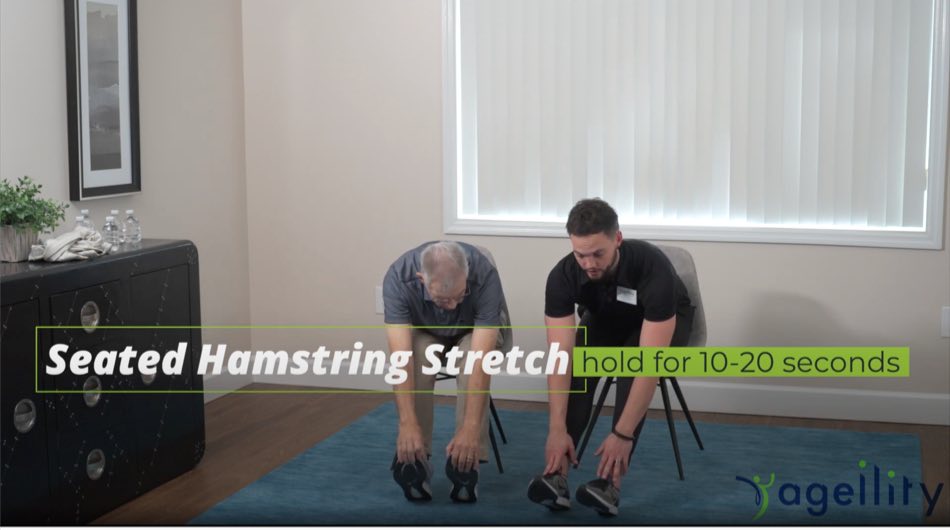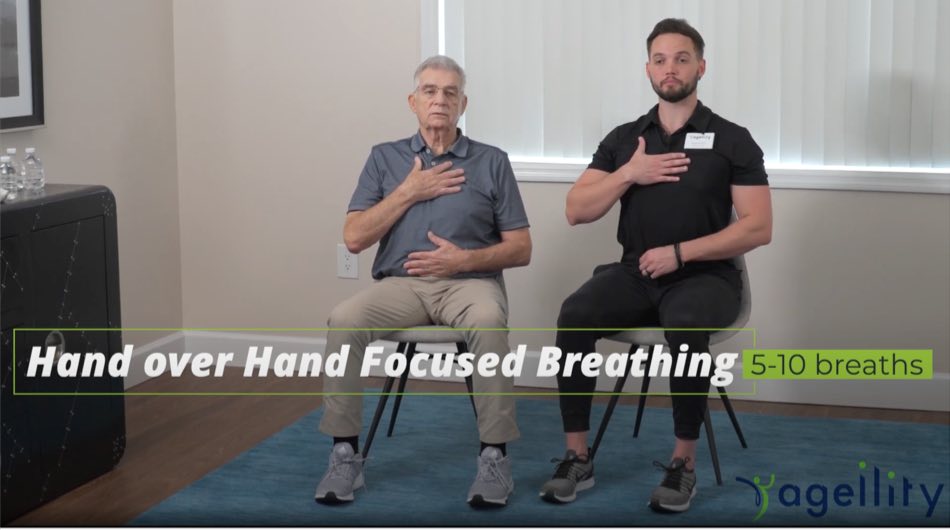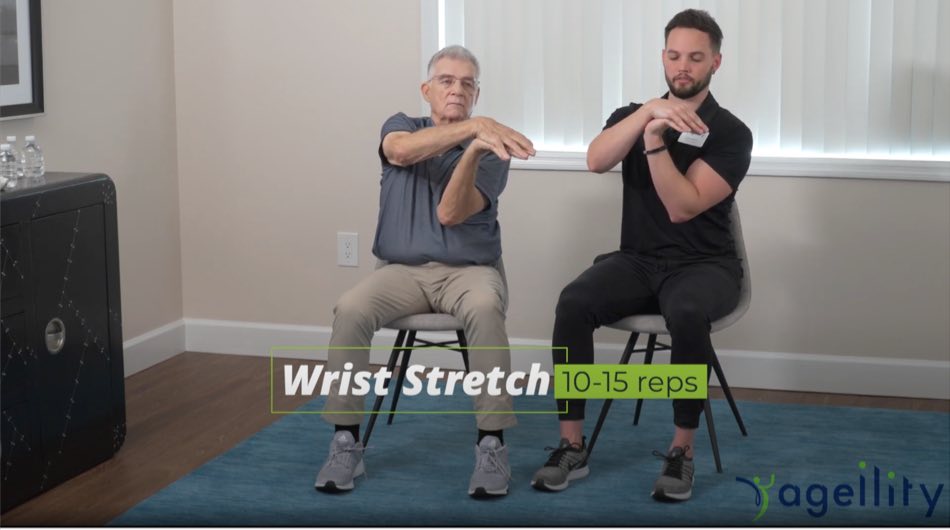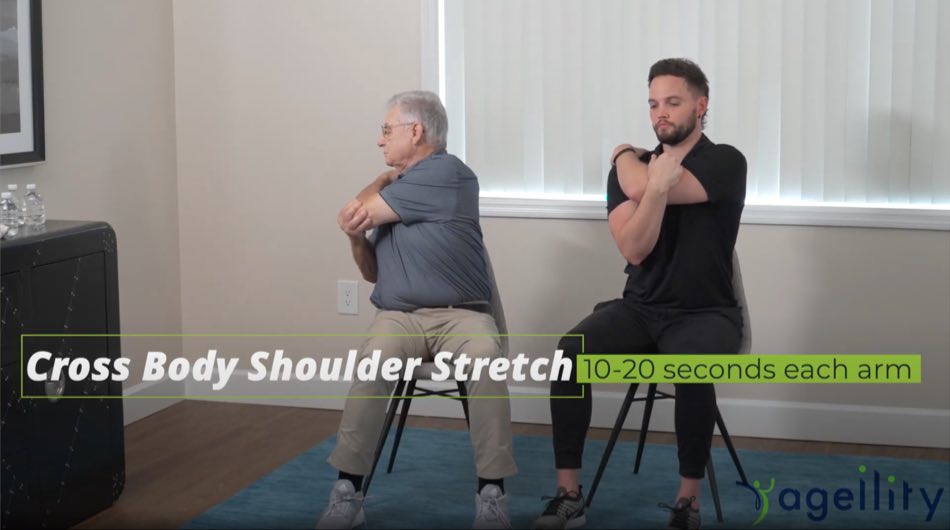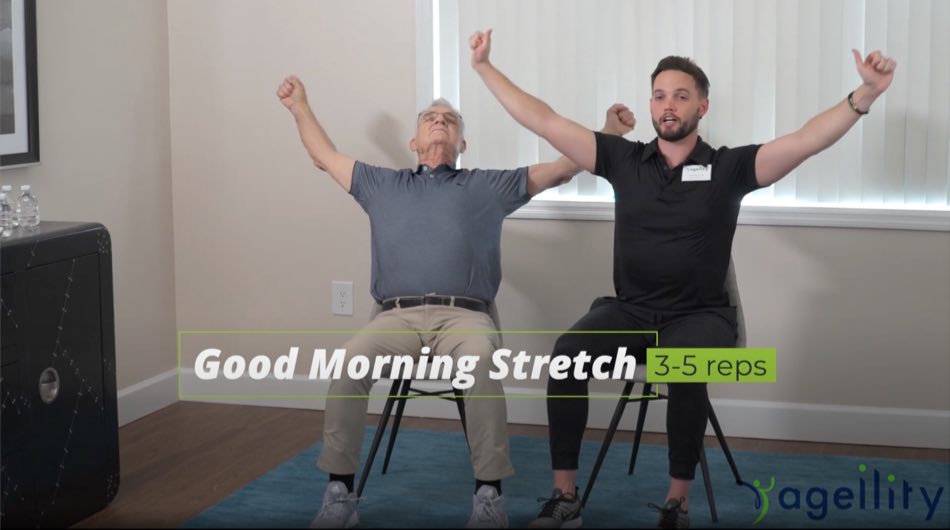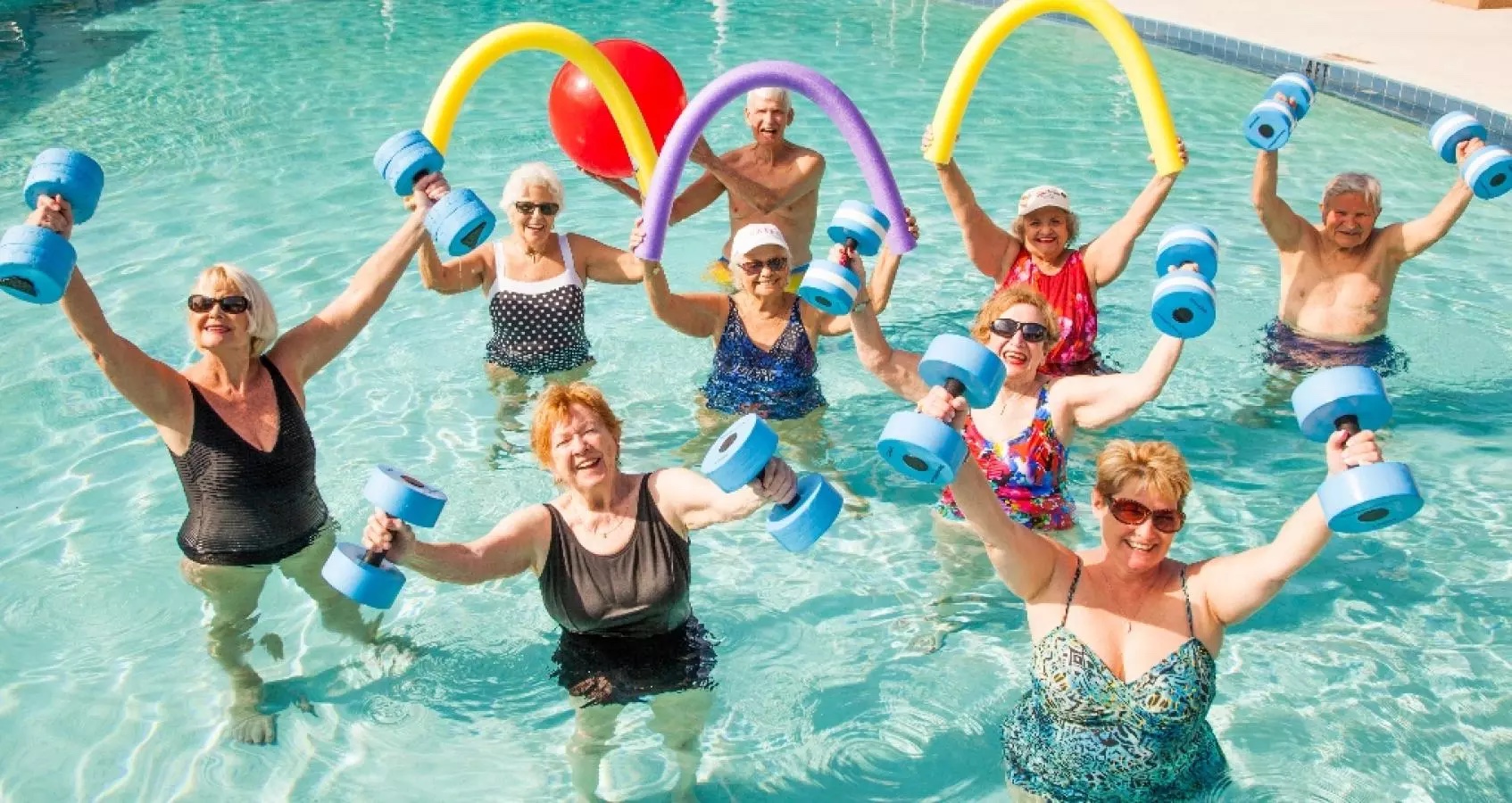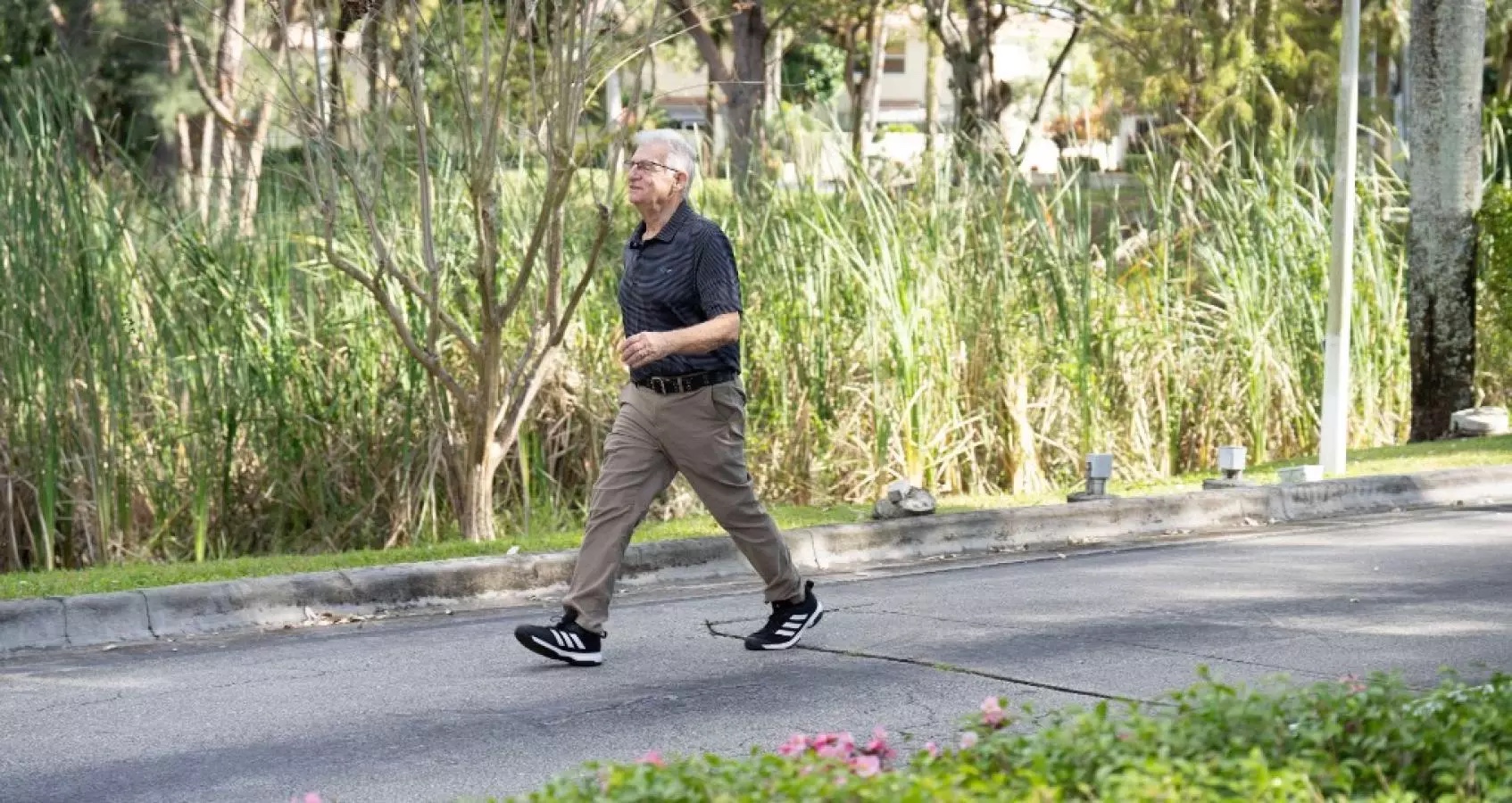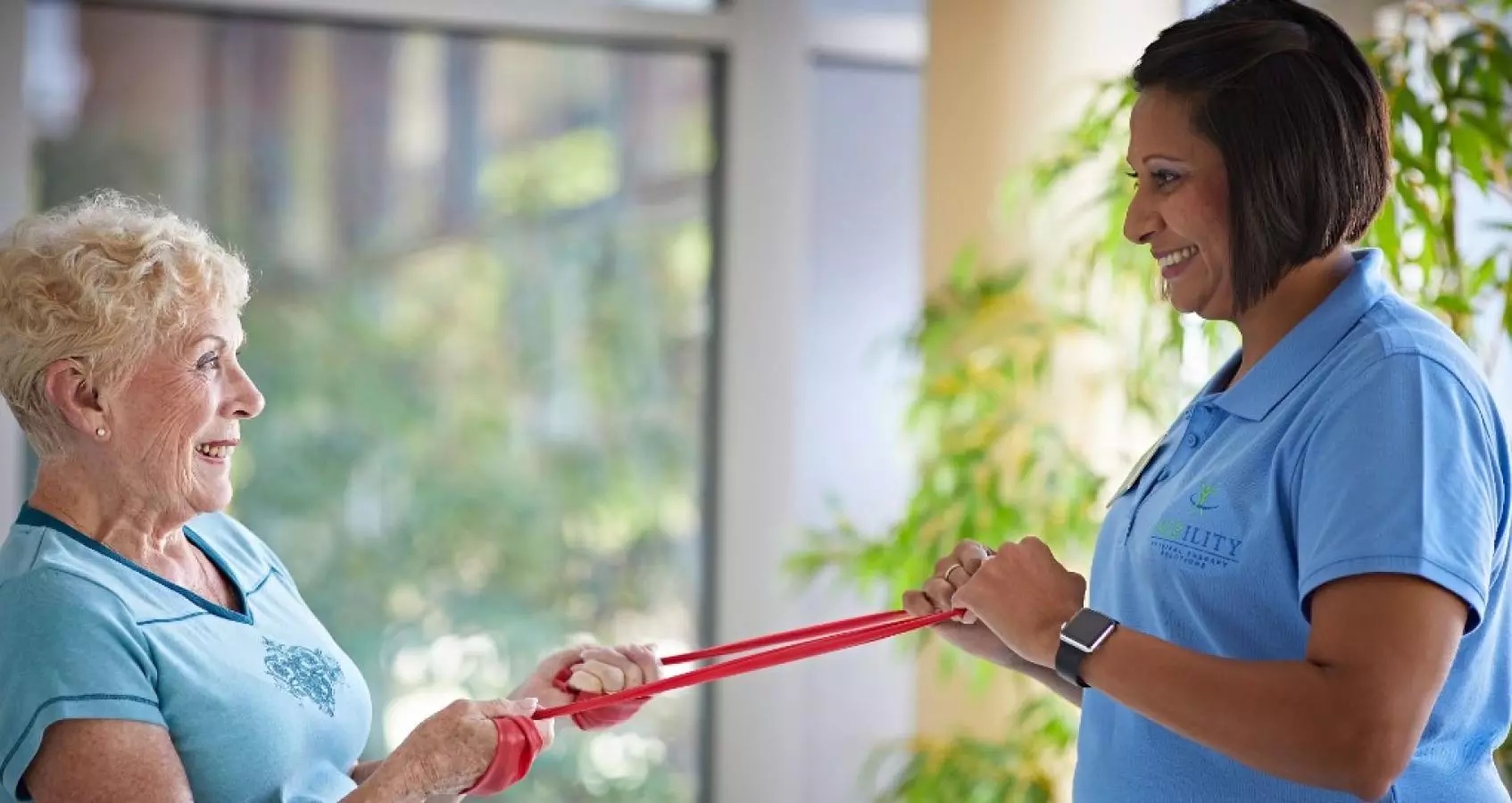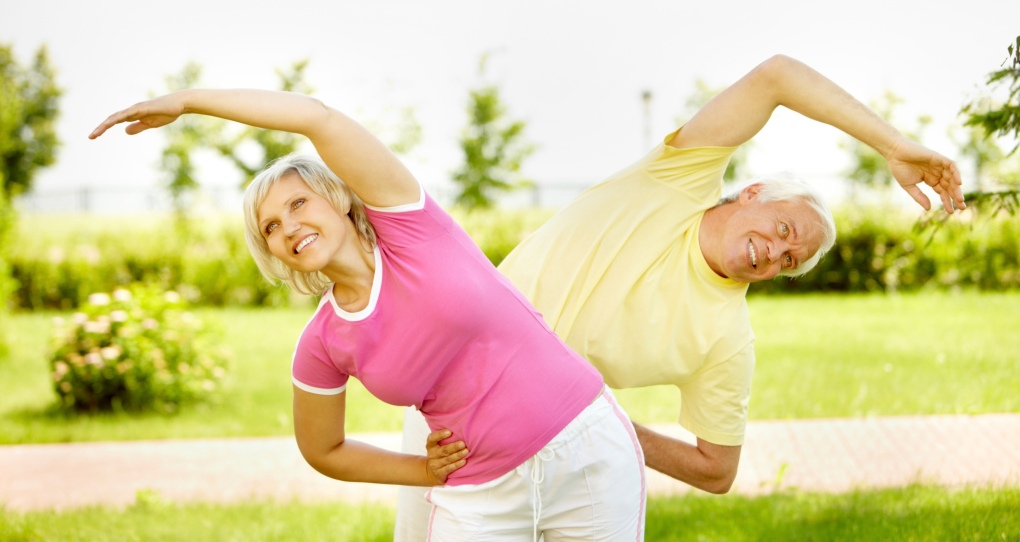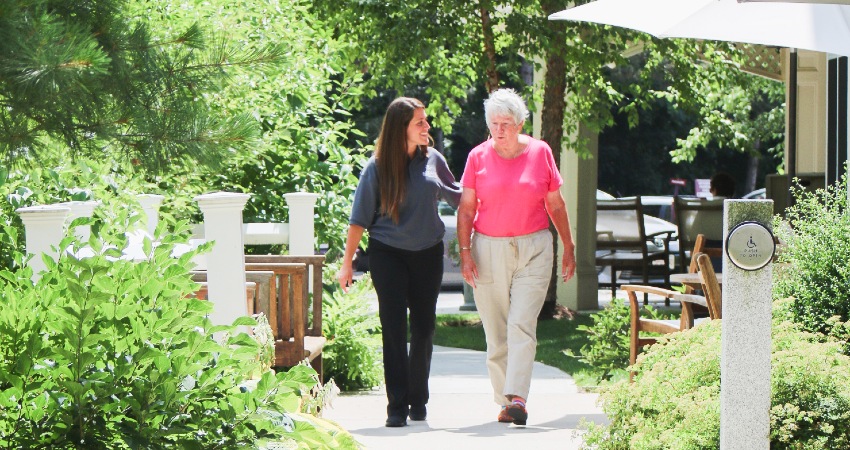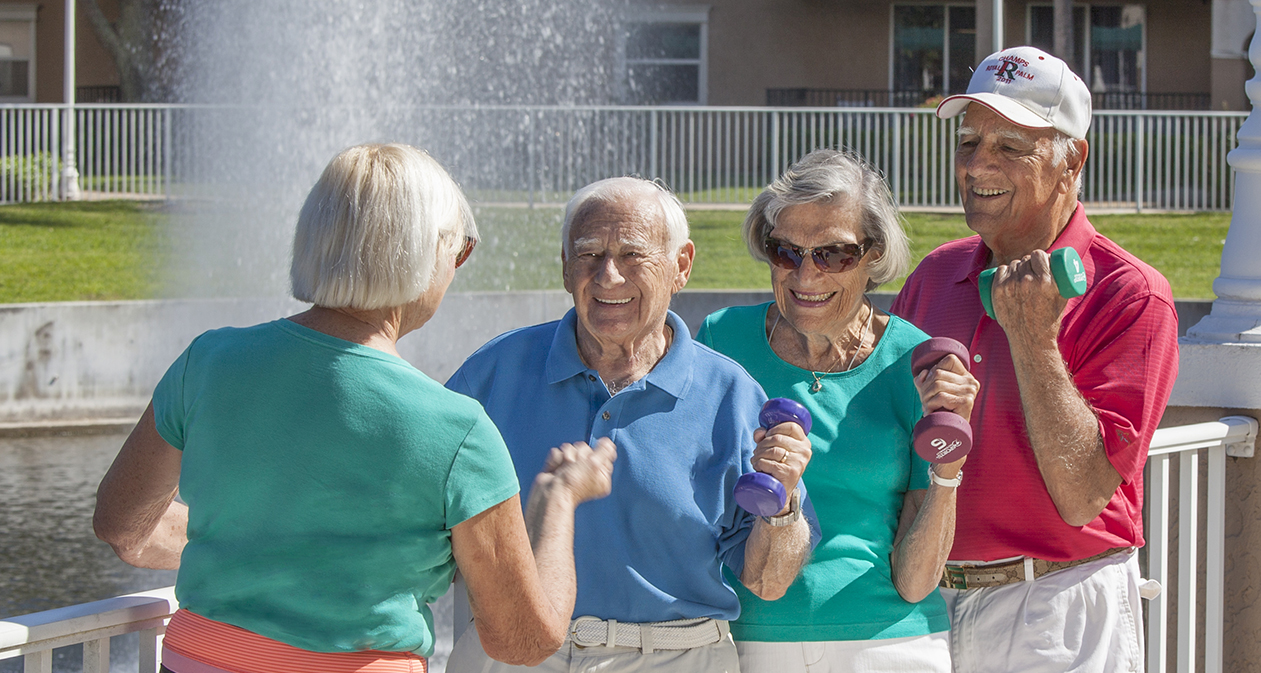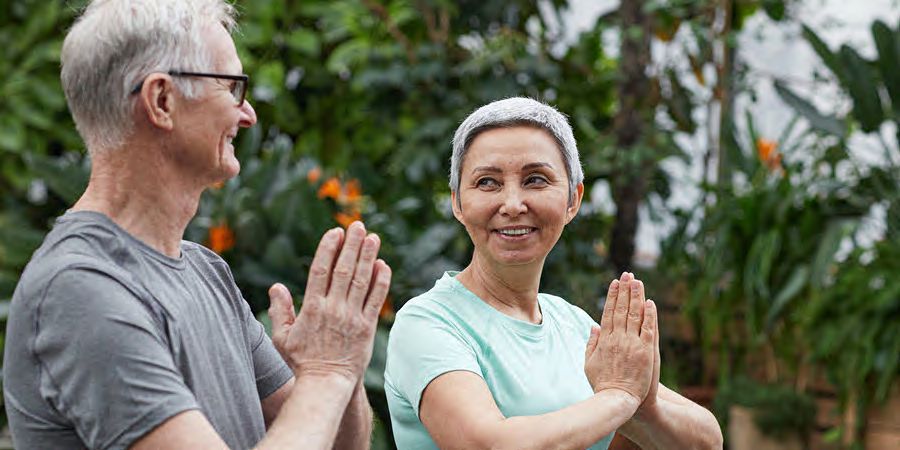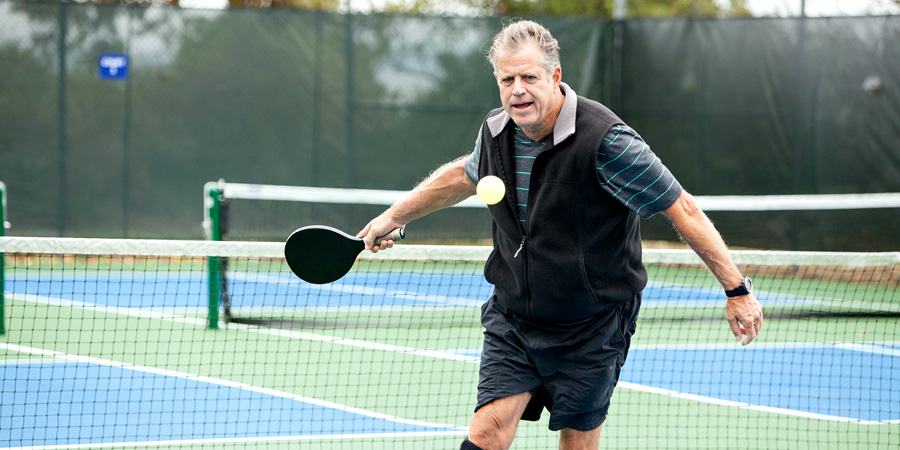30-Minute Workout for Older Adults
April 4, 2022Independence. It’s a powerful word. Especially as you age. Because independence is life. It’s the freedom to walk down the street unaided for a visit with your neighbor. It’s the power to pick up your grandkids for a sweet snuggle. It’s the energy to grab your golf clubs and putt for par on the back nine. And your path to maintaining independence is rooted in regular exercise.
So let’s get moving. Join 78-year-old Mac McCaffrey for a 30 minute, step-by-step workout as he trains for the National Senior Games with Ageility personal trainer, Adam Boyette. This half-hour senior workout is specifically designed with older adults like you in mind. So you can increase your mobility, improve your balance, build strength, and most of all…live your best life.
Here’s all you’ll need to complete your 30-minute workout:
- 1 chair
- 1 hand towel
- 2 filled water bottles (you’ll use these as weights)
Just remember: Safety is key. So before you begin, make sure the floor around you is clear and that you have an extra chair nearby for added support.
This workout also comes with a supporting guide — a printable PDF document that you can reference again and again. It outlines every exercise you’re about to enjoy. Take a look, print it out, and save it for future use.
Start your 30-minute senior workout with a warm up.
A great warm up is more than just a good idea. It’s an essential part of your workout. So use this time to wake up your muscles and prepare your body for the work ahead. Follow Mac and Adam as they complete a series of stretches that will help get you ready to move.
Best Warm-up Exercises for Seniors
Neck Stretch – Left and Right
Slowly bring your right ear to your right shoulder and hold. Then repeat the same movement on the left. Do this three times on each side.
Neck Stretch – Front and Back
Slowly bring your chin to your chest and hold. Then look up to the ceiling with your chin up. Repeat this movement three times.
Shoulder Rotations
Bring your hands to your side and complete 10 forward shoulder rotations, then 10 backward rotations.
Seated Lateral Torso Bend
Have a seat in your chair and bring your hands to your side. Reach to your right toward the floor, then to your left. Complete 7 to 10 reaches on each side.
Seated Torso Rotations
Cross your hands in front of your body and rotate to your right, then to your left. Complete 10 rotations on each side.
Seated Torso Bend
Place your hands on your lap and open your legs a little bit. Interlock your fingers, and reach down to the floor. Come back up and repeat 4 times.
Marching High Knees
Stand up and find your balance. You can hold onto the back of your chair if needed. Begin to march in place. Complete 12 high-knee movements on each leg.
Single-Leg Hip Circles
Remain standing and hold onto the back of your chair. Slightly lift one leg and start to move it in circles. Complete 12 leg circles on each side.
Keep moving with the main workout.
Your workout is in full swing now. So grab your towel and your water bottles, because they’re joining the fitness party for this next set of exercises. Watch Mac and Adam while you complete a series of upper and lower-body strength and balance movements.
Set one: Senior fitness – towel exercises.
Seated Straight-Arm Shoulder Raise
Grip your towel at each end. Start at your knees and raise your towel above your head, keeping tension on the towel. Then lower it back down. Repeat the movement 10 times.
Straight-Arm Steering Wheels
Grip your towel tightly at each end. Keep tension on the towel and rotate from left to right. Repeat the movement 8 times in each direction.
Chest Press with Torso Reach
Grip your towel tightly at each end. Bring your towel to your chest and reach forward as far as you can. Then straighten back to the starting position. Repeat the movement 10 to 15 times. You can do this exercise standing or sitting.
Tension Pulls
Bring your towel to the front and pull it tight like you’re trying to rip it in half. Bring your hands back together, then pull back. Repeat the movement 10 to 15 times.
X-Tension Pulls
Working in an X-style motion, rotate and pull your towel up and down. Repeat the movement 10 to 15 times.
Standing Straight-Arm Shoulder Raise
Gripping your towel at each end, pull it tightly while you reach up high as you can. Then bring your arms back down. Repeat this movement 10 to 15 times.
Set two: Senior fitness – upper-body strength with water bottles.
Front Shoulder Raise
Hold your two filled water bottles in front of your thighs, then reach up and down. Repeat the movement 10 to 15 times.
Bicep Curl with Shoulder Press
Hold your two filled water bottles in front of your thighs with your palms facing out. Curl the water bottles up toward your shoulders, then rotate your wrists so your palms are facing out. Push up toward the ceiling. Bring your arms back down to your shoulders and rotate your wrists so your palms are facing in. Curl your arms back down to the starting position. Repeat this movement 12 times.
Lateral Shoulder Raise
Hold your water bottles down at your sides. Slowly lift your arms out (no higher than shoulder level). Then lower back down. Repeat this movement 12 to 15 times.
Overhead Triceps Extension
Holding your water bottles in each hand, bring your arms up behind your ears and lower your hands. Point your elbows up as high as you can extend your arms toward the ceiling. Then extend back down. Repeat the movement 6 to 10 times.
Skier Triceps Extension
Holding your water bottles in each hand, bring your hands up near your armpits, then push your arms back. Repeat this movement 6 to 10 times.
Alternating Bicep Curls
Holding your water bottles in each hand, complete a set of alternating arm curls. Repeat this movement 20 to 25 times on each arm.
Set three: Senior fitness – lower-body strength workout.
Lateral Weight Shifts
Stand behind your chair, using it for support. Position your legs a little wider than shoulder width apart and begin to shift your weight from left to right. As you shift from side to side, one leg will be bent while the other is straight. Complete 10 to 15 reps on each leg.
Staggered Stance Power Knees
Step to one side of your chair and hold on for balance. Step back with your right leg, then lift your knee up to waist level. Bring your leg back down and repeat. Complete 10 high-knee movements on your right side. Then, step to the other side of the chair and repeat the movement for 10 reps on your left leg.
Lateral Bends
Stand behind your chair with your feet together. Place your right hand on the back of the chair to steady yourself. Then reach up with your left arm as high as you can, slowly bending to the right. Hold the position for 10 to 20 seconds. Then switch sides. Complete the movement a few times on each side.
Single-Leg Lateral Hip Flexion
Position your legs nice and wide as you stand behind your chair. Hold onto the chair and shift your weight onto your right leg. Lift your left leg up and hold for 5 seconds. Then repeat on the other leg. Complete the movement 2 to 3 times.
Toe Stands
Stand behind your chair with your feet together. Lift up onto your toes as high as you can and hold for 10 to 20 seconds. Repeat this movement 2 to 3 times.
Now, wrap up with a cool down.
You’re almost done! The only thing left to do is cool down. Which means it’s time to relax, stretch, catch your breath, and lower your heart rate. Follow along as Mac and Adam show you how to successfully finish your workout.
Breathing with Shoulder Raise
Sit in your chair and place your feet flat on the floor. Interlock your fingers and reach your arms up toward the ceiling while taking a deep breath in. Then lower your arms back down while breathing out. Repeat the movement 5 times.
Seated Hamstring Stretch
Bring your feet together and point your toes toward the ceiling. Slide your hands down your legs while keeping your chin up and looking forward. Hold for 10 seconds, then slide your hands back up your legs to your starting position. Repeat the movement 3 to 4 times.
Hand over Hand Focused Breathing
Place one hand on your chest and the other on your stomach. Take a deep breath in and slowly exhale. Repeat the breathing exercise 5 to 10 times.
Wrist Stretch
Bring your hands in a prayer position then slowly bend them from left to right. Complete the movement 10 to 15 times.
Cross Body Shoulder Stretch
Place your left hand on your right shoulder. Then use your right hand to slowly pull your elbow towards your body. Switch sides and repeat the movement 10 to 20 times on each arm.
Good Morning Stretch
Stretch your arms back like you’re waking up in the morning. Bring your arms back down and shake them out. Repeat the movement 3 to 5 times.
Reach your senior fitness and rehab goals — one step (and stretch) at a time.
Every step you take matters. Whether you’re physically taking a walk or mentally making a choice to stay active. It’s all proof that you’re moving forward. So if you start to notice that you’re slowing down, don’t let it hold you back. Turn to Ageility to help reach your senior fitness goals, and start turning things around.
Get the personalized senior fitness training and rehab support you need to keep advancing. Find an Ageility clinic near you to learn more.
Senior living communities: This is your chance to bring specialized rehab services and fitness classes to your community. Discover the benefits of Ageility partnerships now.


